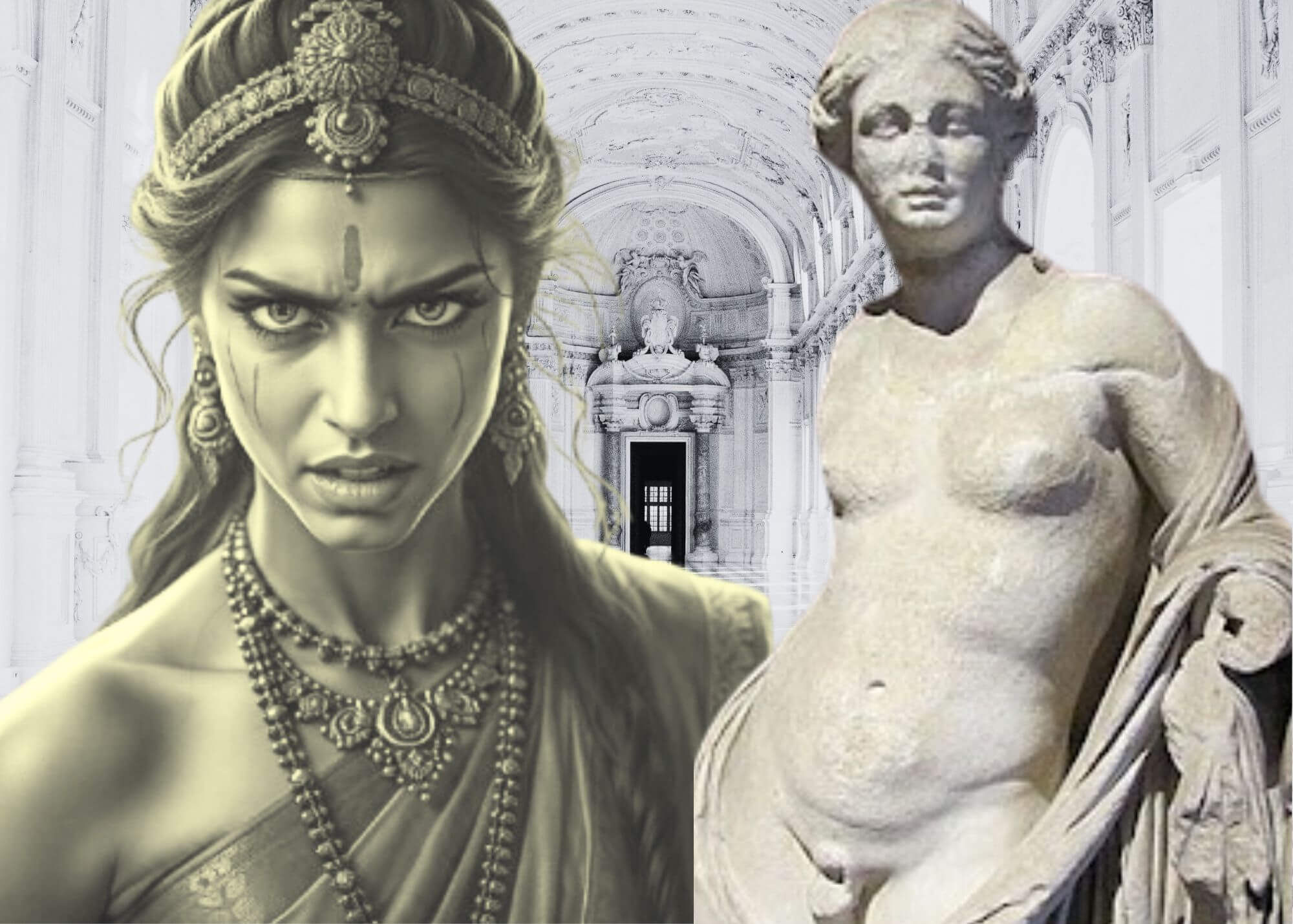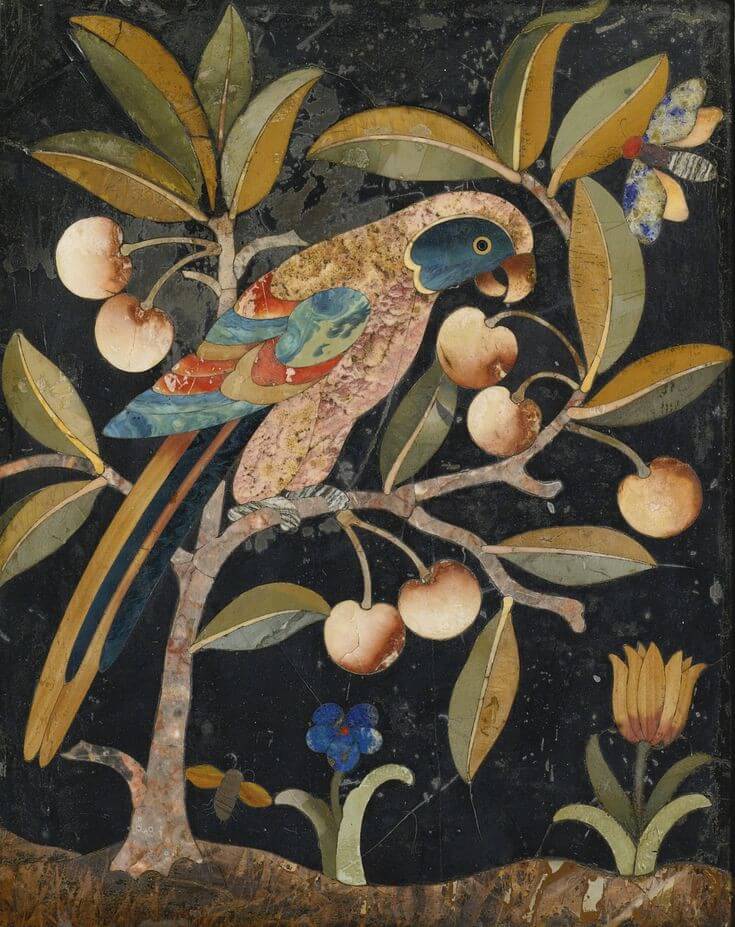Sohini delves into the LGBTQIA+ community’s history, referencing ancient texts, Greek mythology, and art, highlighting gender fluidity and love’s enduring nature, exclusively for Different Truths.

The LGBTQIA+ community is as old as life itself, as mentioned in various instances, in our very own Vedas and the Puranas, that is inclusive and tolerant toward gender fluidity. Ancient Greek mythology, sculpture and art bears testimony to the existence of this community with respect and empathy. Love is love, without conditions, boundaries or social diktat. I have explored certain characters in my dance productions and in my books as I found the layers very intriguing and to mark my respect and empathy towards the third gender. My dance opera ‘Lament’ celebrates the storm and fire of Shikhandi and his/ her tribe.
The Tale of Hermaphroditus
Aphrodite, the goddess of love, and the gods’ messenger Hermes produced a handsome son. They chose the name Hermaphroditus by combining their names. However, they didn’t rear their son. Instead, he was delivered to Mount Ida in Asia Minor, where nymphs reared him. Hermaphroditus was incredibly attractive, and he was aware of it. His ego even led him to believe that he could rule the world simply based on his appearance. Therefore, when he turned 15, he decided to try to accomplish it.
Salmacis and Hermaphroditus
He travelled to several places, including Caria. One day, while exploring some nearby woods near Halicarnassus, he stumbled across a nymph by the name of Salmacis sitting next to a fountain. This nymph was immediately overcome with passion for him, therefore she must have agreed with the present judgement of his beauty. Salmacis attempted valiantly to seduce the lad because her desire to have him was so intense. Hermaphroditus, however, didn’t want anything to do with her and refused all of her advances, so their love was one-sided. Salmacis gave up and left at last, or so Hermaphroditus believed. The nymph was actually watching the god undress and get into the pool from behind a tree. Salmacis jumped into the water and tightly encircled Hermaphroditus when she saw his guard had dropped. The nymph kissed him and held him despite his attempts to flee. Salmacis called out to the gods, pleading with them to unite the two permanently, as Hermaphroditus attempted to repel her. Most likely, she meant to enter into a committed relationship. But the gods joined the two together physically.
The New Hermaphroditus
His male genitalia remained, but Hermaphroditus’ skin started to soften, his face and legs started to look more feminine, and he developed breasts. He was in shock! He understood that he could no longer rule the world with his good looks since he would be despised by everyone. In Metamorphoses, the Roman poet Ovid recounts how a furious and resentful Hermaphroditus went to his parents and begged them to curse the fountain, causing anybody who drank from it to turn into a mirror image of him. According to some versions of the story, anyone who drank from the pool would likewise become lethargic. His request was approved by his parents.
Symbolism and Appearance: Hermaphroditus & Shikhandi
Hermaphroditus became the deity of hermaphrodites and the effeminate as well as the representation of androgyny as a result of the passionate Salmacis and the events of that day. He also served as a physical representation of the marriage between a man and a woman.
In a certain way, Hindu philosophy is straightforward at its core. Every person is an everlasting atman who has been embodied (spirit or soul). Every atman, which is unique from the body and all of its expanded characteristics, including race, gender, and sexual orientation, comes from the same divine source and belongs to the same spiritual family, deserving of the dignity of love, respect, and equality.
But morality is a nuanced subject, and some of Hinduism’s most revered thinkers have debated it. Although the ultimate goal of every moral code advocated by the religion is to promote unconditional love and acceptance, India’s great epics depict numerous instances where even well-intentioned people have failed to achieve this goal in their effort to rigidly adhere to the “rules.”
The most well-known instance is perhaps that of Bhishma, whose treatment of Amba—a princess who eventually changed into the transsexual Shikhandi—led to his bodily death.
The Romance of Bhishma and Amba
According to the Hindu sacred epic The Mahabharata, the romance of Bhishma and Amba began when Bhishma accepted a vow of celibacy and gave up his right to rule the Kuru dynasty so his father may wed the woman he cherished. As a result, Vichitravirya, Bhishma’s younger half-brother, eventually succeeded to the crown.
When Vichitravirya reached adulthood, Bhishma started looking for several possible spouses for his brother to wed. (The ancient Indian kings frequently had more than one bride since doing so increased the likelihood of the kingdom being perpetuated.)
Amba, Ambika, and Ambalika were three daughters of the king of Kashi who just so happened to be available for marriage. In an unexpected turn of events, Bhishma showed up at their swayamvara ceremony (a competition between princes for a bride), drove away all the other would-be suitors, and then brought the three princesses back to Hastinapura (the Kuru capital) to wed Vichitravirya.
The two younger sisters, Ambika and Ambalika, were thrilled to marry Vichitravirya because the Kuru dynasty was so prestigious. But Amba had a different opinion. She went up to Bhishma and told him that she and Shalva had already committed their hearts to one another and that the swayamvara was actually set up so that he would win.
After much thought, Bhishma made arrangements for Amba to be brought to Shalva’s realm so that she may wed him instead.
Amba Felt Rejected
But Amba did not receive the welcome she had imagined when she arrived at Shalva’s palace. Shalva had no desire to interact with her. Being a proud warrior, he refused to accept Bhishma’s “charity” since he felt denigrated by him.
She pleaded with him and begged him to change his mind, but he refused. After giving up in despair, Amba went back to Hastinapura where she told Bhishma what had happened to Shalva and that she was now forced to wed Vichitravirya.
To Amba’s surprise, Bhishma informed her that since she had already committed her heart to another person, getting married to Vichitravirya was no longer an option.
As soon as she realised she was out of options, she proposed that Bhishma marry her. After all, by kidnapping her, he was the one who put Amba in this situation. Bhishma, however, claimed that he could not and would not violate his celibacy vow. Amba was told to go back to her family since she was essentially declared unmarriable.
Amba Enraged
Naturally, exercising effective moral judgement includes knowing when to deviate from these laws in order to take results into account. While Bhishma had a great personality and genuinely wanted to do what was right, Shalva never developed this discernment. So, he later changed his worldview to one that was more practical, but not before he enraged Amba.
Amba had done nothing wrong and was sincere and honest. Despite this, she was ignored since she was considered broken goods. She was furious with both men as she thought back on what had transpired, but she came to the conclusion that Bhishma was ultimately to blame for her lost future. She would be a contented queen today if he had never kidnapped her.
She entered the jungle and started engaging in rigorous penance in order to gain the strength she needed to exact revenge rather than go back to her family’s house. She eventually won the favour of Shiva and pleaded with him to grant her the power to murder Bhishma. Shiva granted Amba’s request and informed her that she would certainly contribute to Bhishma’s demise in the afterlife. Amba promptly murdered herself since she was determined to achieve her goal as quickly as possible.
The remainder of the story has been told in a number of different ways. According to some traditions, king Drupada gave birth to Amba as a daughter. Shiva predicted that she would one day become a man, so Drupada gives her the name Shikhandi and raised her as a guy. In this story, she really is changed into a man by a strong creature who lives in the jungle. In some stories, Shikhandi is born a male but develops into a transgender woman as a result of Shiva giving her the capacity to recall her previous existence.
In any case, Shikhandi does have the chance to be the reason for Bhishma’s demise during the Battle of Kurukshetra, as Shiva had predicted, and the matter of his gender is crucial.
The Mahabharata’s Conclusion: The 18-day Kurukshetra Battle
Bhishma wanted the Pandavas to triumph, he was aware that no one could stand a chance against him. The Pandavas was aware of this as well, so on the ninth night of the battle—fighting would cease each evening and restart the following day—they went to Bhishma and enquired as to how they may be able to defeat him. Bhishma took the chance to say that as a warrior, he would never, ever engage in combat with a lady.
Knowing that Shikhandi had previously lived as Amba, the Pandavas launched an assault on Bhishma the following day, with Shikhandi leading the way and Arjuna, the most accomplished warrior among them, close behind. Bhishma became exposed by declining to engage Shikhandi in combat, which allowed Arjuna to kill him with a hail of arrows.
The Pandavas went on to win the war after defeating Bhishma, the leader of the Kuru army. And Shikhandi, whose gender was never a problem in society, was recognised as a significant figure who was crucial to defeating the Kauravas.
The Koovagam Festival
Furthermore, the Koovagam Festival, the 18-day-long grand event that celebrates the spirit of the transgender community, is held in the Koovagam hamlet in the Villupuram district. The festival goes back to the Vedic period of The Mahabharata.
To mark the occasion, thousands of the transgender community visit this town to worship at the Koothandavar Temple. The temple is devoted to Lord Aravan.
According to The Mahabharata, Lord Aravan is an illegitimate son of Arjuna. He consents to be sacrificed to Goddess Kali to put an end to the conflict between the Pandavas and the Kauravas in exchange of a matrimonial ceremony.
Since no one wants to wed a man who is about to be slain, thus Lord Krishna assumes the shape of Mohini and weds him. Later, he voluntarily offers himself to the goddess after the ritual.
Hinduism emphasises the equality of the spirit over differences in gender, ethnicity, and sexual orientation.
As a result, the history of Hinduism includes a wide variety of personalities and the important roles they have had in some of India’s most cherished sacred tales. Likewise in Greek mythology. Love is love, without conditions.
Picture design by Anumita Roy with images available on the internet






 By
By
 By
By

 By
By